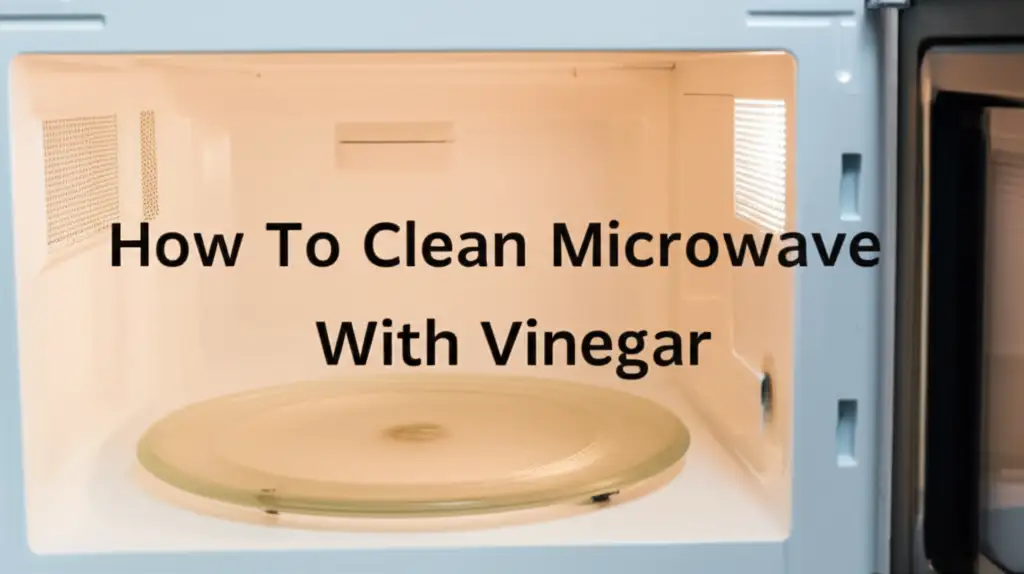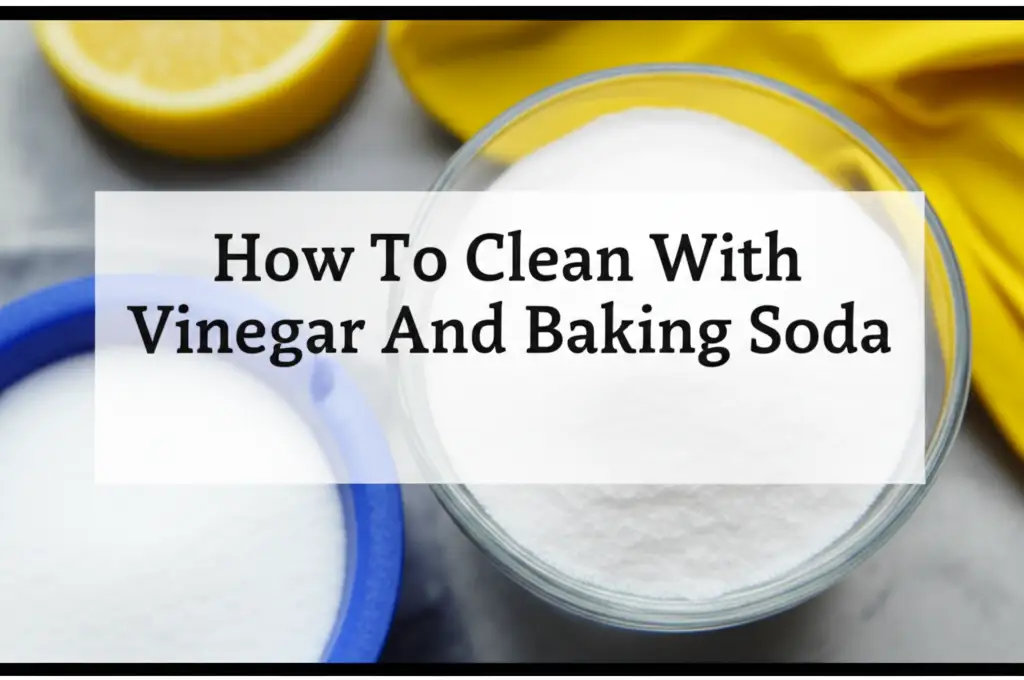· Home Cleaning · 20 min read
How To Clean Washing Machine With Baking Soda And Vinegar

Achieve a Spotless Washer: The Baking Soda and Vinegar Method
Have you ever opened your washing machine door only to be hit with a strange, musty smell? You are not alone. Our washing machines work hard to clean our clothes, but they also get dirty themselves. Soap scum, mineral deposits, and mold can build up inside. This buildup causes bad odors and reduces cleaning power. I want to share a simple, powerful solution for this common problem. You can make your washing machine clean again using two common household items: baking soda and vinegar. This guide helps you deep clean your washer. It will leave your machine fresh and ready for laundry day.
Takeaway:
- Use baking soda and vinegar for a deep clean.
- Follow specific steps for top-load and front-load machines.
- Clean the dispenser, gasket, and exterior parts.
- Maintain freshness with regular simple habits.
Quick Answer:
Clean your washing machine using baking soda and vinegar in a simple two-step process. First, run a hot cycle with baking soda to scour and deodorize the drum. Then, follow with a hot cycle using white vinegar to rinse away mineral deposits, disinfect, and remove remaining odors.
Why Your Washing Machine Needs Regular Cleaning
Your washing machine is a workhorse. It helps remove dirt and grime from your clothes. Over time, however, this dirt, along with detergent residue and hard water minerals, collects inside the machine. This buildup is not just cosmetic. It causes real problems for your appliance and your laundry.
Think about the invisible layers forming inside your washer. Every load leaves behind some residue. This includes fabric softener, detergent, and body soil. These layers stick to the drum, hoses, and seals. This sticky residue creates a perfect home for mold and mildew. These fungi thrive in damp, dark places. Your washing machine is just such a place.
A dirty washing machine can also cause bad smells. This odor can transfer to your freshly washed clothes. Your clothes might come out smelling less than clean. You might even find black specks on your laundry. These specks are often mold or mildew. This is a clear sign that your machine needs a deep clean.
Beyond odors, buildup affects machine performance. Your washer may not clean clothes as well as it used to. The accumulated grime can reduce water flow. It can also block spray jets. This means your clothes do not get a proper rinse. This can leave detergent residue on your fabrics.
Regular cleaning also helps extend your machine’s life. Removing corrosive buildup protects internal components. It keeps seals flexible and parts moving smoothly. This prevents premature wear and costly repairs. A clean machine runs more efficiently. It uses less energy and water. You save money in the long run. My own experience shows that a clean washer works better.
The Power Duo: Baking Soda and Vinegar for a Deep Clean
Baking soda and vinegar are excellent cleaning agents. They work well together to tackle common washing machine problems. These two common household items offer a natural, effective solution. You do not need harsh chemicals. This makes them safe for your family and the environment.
Baking soda, also known as sodium bicarbonate, is a mild abrasive. It helps scrub away grime and stains. It is also a powerful deodorizer. Baking soda absorbs and neutralizes bad smells. It does not just cover them up. When you use baking soda in your washing machine, it helps lift away sticky residues. It also freshens the drum. This leaves your machine smelling clean.
White vinegar, or acetic acid, is another cleaning superstar. It is a strong disinfectant. Vinegar kills mold, mildew, and many types of bacteria. It is also great at dissolving mineral deposits. Hard water leaves behind calcium and lime scale. Vinegar breaks down these tough deposits. This helps clean internal pipes and parts. It also works as a natural fabric softener. Do not worry about the smell. The vinegar smell disappears as the machine dries.
When baking soda and vinegar combine, they create a fizzing reaction. This reaction helps dislodge stubborn buildup. It lifts away dirt from surfaces. The fizzing action reaches into crevices. This helps clean areas you cannot easily scrub. This combination creates a powerful, non-toxic cleaning agent. It is perfect for cutting through soap scum and grime. I have used this duo for years. It always delivers impressive results.
Using this natural pair helps avoid chemicals. Many commercial cleaners contain harsh chemicals. These chemicals can irritate skin or cause respiratory issues. They can also harm your washing machine over time. Baking soda and vinegar are gentle on your appliance. They are also gentle on your health. This method is a smart choice for a deep, safe clean.
Gathering Your Cleaning Essentials: What You Need
Before you start cleaning your washing machine, gather all your supplies. Having everything ready makes the process smooth. You likely have most of these items in your pantry already. This keeps the cleaning cost low. My goal is to make this task simple and stress-free for you.
First, you will need baking soda. Make sure it is fresh. Old baking soda loses some of its potency. You will need about two cups for a thorough cleaning. Buy a large box. It is often cheaper and lasts longer. You can find baking soda in the baking aisle of any grocery store.
Next, get white vinegar. Do not use apple cider vinegar or balsamic vinegar. These types can leave stains or residue. Plain white distilled vinegar is best. You will need about four cups. A gallon-sized jug is a good idea. This ensures you have enough for multiple cleanings. Vinegar is usually in the cleaning aisle or with cooking oils.
You also need a few basic cleaning tools. A clean spray bottle is very helpful. You will use it to apply a vinegar solution to specific areas. A soft cloth or sponge is essential for wiping surfaces. Old towels work well too. Make sure the cloth is clean and lint-free. This prevents leaving fibers behind.
For tough spots, a small brush can be useful. An old toothbrush works perfectly. It reaches into tight spaces. You might also want a bucket or bowl. This holds water for rinsing your cloth. Finally, a pair of rubber gloves is a good idea. They protect your hands from cleaning solutions.
Make sure your washing machine is completely empty. Remove any clothes or items from the drum. Check the detergent dispenser. Look under the gasket. Remove any small objects you find. Having an empty machine makes the cleaning process easier and more effective. I always ensure my machine is completely clear before I start.
Deep Clean Your Top-Load Washer: Step-by-Step Guide
Cleaning a top-load washing machine is a straightforward process. This method uses the power of baking soda and vinegar. Follow these steps carefully for the best results. You will enjoy a fresh, clean machine soon.
Prepare Your Top-Load Machine
First, make sure the washing machine is empty. Remove all clothes, towels, or any items from inside the drum. Check the detergent dispenser. Sometimes small socks or items get stuck there. Wipe out any visible gunk from the dispenser itself.
The Baking Soda Power Wash
Set your washing machine to the hottest water setting. Choose the largest load size available. Start the cycle. Let the drum fill completely with hot water. Once the water fills, add two cups of baking soda directly into the drum. Let the machine agitate for a few minutes. Then, pause the cycle. Let the baking soda solution sit in the machine for at least 30 minutes to an hour. This allows the baking soda to break down residue and neutralize odors. After soaking, restart the cycle and let it complete fully.
The Vinegar Rinse
Once the baking soda cycle finishes, do not add any detergent. Now it is time for the vinegar. Set the machine to another hot water cycle. Again, choose the largest load size. Add four cups of white vinegar to the detergent dispenser or directly into the drum as it fills with water. Let this cycle run from start to finish. The vinegar will kill bacteria, mold, and dissolve any remaining mineral deposits. It also helps to rinse away the loosened grime from the baking soda step.
Final Touches for Top-Loaders
After the vinegar cycle completes, use a clean cloth. Wipe down the inside of the drum. Pay attention to the top rim of the drum. Clean the agitator thoroughly if your machine has one. Remove any residue you see. Also, wipe the lid of the machine. Clean the exterior surfaces. Spray some vinegar solution (one part vinegar, one part water) on areas that need extra cleaning. Leave the lid open for several hours. This allows the inside of the machine to air dry completely. Air drying prevents new mold or mildew growth. My top-loader feels and smells like new after this process.
Deep Clean Your Front-Load Washer: Step-by-Step Guide
Front-load washing machines are popular, but they need specific cleaning attention. The rubber gasket is a common place for mold and odors. Using baking soda and vinegar is highly effective. Let me guide you through cleaning your front-load washer.
Prepare Your Front-Load Machine
First, ensure your machine is empty. Remove all laundry. Open the door wide. Inspect the rubber gasket around the door opening. This area often traps water, lint, and mold. Remove any visible debris from this gasket. You might find hairpins or small coins here.
The Baking Soda Pre-Soak
Add two cups of baking soda directly into your washing machine’s detergent dispenser. If your dispenser has separate compartments, put it in the main wash compartment. Set your machine to the hottest water setting. Choose the “Tub Clean” or “Self-Clean” cycle if your machine has one. If not, select the longest, hottest wash cycle available. Start the cycle. Let it run for a few minutes to dissolve the baking soda. Then, pause the cycle. Allow the baking soda solution to sit in the drum for at least 30 minutes to an hour. This soaking time helps break down tough grime and odors.
The Vinegar Deep Rinse
After the baking soda soak, restart the cycle. Let it complete fully. Once that cycle finishes, open the dispenser again. Add four cups of white vinegar to the detergent dispenser. Use the main wash compartment again. Run another full, hot cycle. This time, do not pause the cycle. Let it run all the way through. The vinegar will disinfect the machine. It will dissolve soap scum and mineral deposits. It will also rinse away any residue loosened by the baking soda.
Special Attention to the Gasket
The rubber gasket on front-loaders requires extra care. After the cycles finish, mix equal parts white vinegar and water in a spray bottle. Spray this solution generously onto the gasket. Use a clean cloth or sponge to wipe down the gasket thoroughly. Pull back the folds of the rubber seal. Look for hidden mold or grime. An old toothbrush can help scrub stubborn spots. Dry the gasket completely with a clean towel. Leaving the gasket wet can lead to new mold growth.
Final Touches for Front-Loaders
Once you clean the gasket, wipe down the inside of the drum with a clean cloth. Check the door and exterior surfaces. Spray and wipe them if needed. Importantly, always leave the front-load washer door open between uses. This allows the drum and gasket to air dry. Proper airflow prevents moisture buildup. Moisture is the main cause of mold and mildew in front-load machines. My front-loader stays fresh and odor-free when I follow these steps.
Addressing Common Washing Machine Problems: Mold, Mildew, and Odors
Washing machines can develop specific problems. Mold, mildew, and persistent odors are common complaints. The baking soda and vinegar method directly addresses these issues. Understanding why these problems occur helps you fix them.
Mold and mildew thrive in damp, dark environments. Your washing machine’s drum, especially the gasket in front-loaders, provides this perfect setting. Leftover water, lint, and soap residue feed these fungi. They grow quickly. This results in black spots and a strong musty smell. Ignoring these signs can lead to larger problems. It can also transfer mildew spores to your clothes.
Baking soda works as a natural antifungal. When you soak the machine with baking soda solution, it helps kill mold and mildew spores. It also has strong deodorizing properties. It neutralizes the unpleasant smells created by mold. Instead of just masking the odor, baking soda removes it. It absorbs the acidic compounds that cause the musty smell. This is why it is so effective at making your machine smell fresh.
Vinegar is a powerful disinfectant. Its acetic acid content effectively kills a wide range of bacteria, mold, and mildew. It also dissolves the mineral deposits and soap scum that create a breeding ground for these fungi. When used in a hot cycle, vinegar penetrates deep into the machine’s components. It cleans pipes, hoses, and hidden crevices. This dual action of baking soda and vinegar ensures a thorough cleanse. They work together to remove both the active growth and the root causes of the problem.
For very stubborn mold or odors, you might need extra steps. For a heavily soiled gasket, apply a paste of baking soda and a little water. Let it sit for 10-15 minutes before scrubbing with an old toothbrush. Then, wipe it clean with a vinegar solution. For persistent odors, you can run an empty cycle with only one cup of vinegar once a month. This acts as a maintenance step. I found this two-part cleaning approach truly eliminates the source of the problem, not just the symptoms.
Beyond the Drum: Cleaning Dispenser, Gasket, and Exterior
Cleaning the main drum is important. However, a truly clean washing machine means cleaning all its parts. The detergent dispenser, door gasket, and exterior surfaces often get overlooked. These areas can harbor grime, soap residue, and even mold. Let me show you how to clean them.
The Detergent and Fabric Softener Dispenser
The dispenser drawer is a prime spot for buildup. Detergent and fabric softener can leave sticky residue. This residue can trap mold and mildew. Many dispenser drawers are removable. Pull out the drawer. If it does not come out, wipe it as best you can. Wash the removable drawer under warm running water. Use an old toothbrush or small brush to scrub away any gunk. A vinegar solution (equal parts white vinegar and water) works well here. Spray the solution on the drawer. Let it sit for a few minutes. Then scrub and rinse. Clean the opening where the drawer sits in the machine. Use a cloth dampened with vinegar solution to wipe inside this area. Make sure all channels are clear. This ensures proper dispensing of laundry products.
The Door Gasket (Front-Loaders)
The rubber gasket around the door of a front-load washer is a notorious spot for mold. Water and lint get trapped in its folds. This creates a perfect environment for mildew. After completing the main baking soda and vinegar cycles, pay special attention to this area. Mix equal parts white vinegar and water in a spray bottle. Spray the entire gasket, lifting up all folds. Let the solution sit for about 5-10 minutes. Then, use a clean cloth to wipe every part of the gasket. An old toothbrush can help scrub away black mold spots. Take your time. Ensure you reach into all crevices. After scrubbing, wipe it completely dry with a fresh towel. It is crucial to dry this area to prevent new mold growth.
The Machine Exterior
The outside of your washing machine also needs attention. Dust, drips, and spills can accumulate. Use a clean, damp cloth to wipe down the top, sides, and front of the machine. You can use an all-purpose cleaner or your vinegar solution. For stainless steel finishes, use a specialized stainless steel cleaner. Clean the control panel gently. Avoid spraying liquids directly onto electronic controls. Wipe around knobs and buttons. Polish any chrome or stainless steel parts. A clean exterior makes your laundry area look much tidier. It also prevents dirt from transferring to your hands when you use the machine. A thorough cleaning of all these areas ensures your entire washing machine is spotless and hygienic.
Maintaining a Fresh Washer: Tips for Ongoing Care
Once you have deep cleaned your washing machine, you want to keep it that way. Regular maintenance prevents future buildup and odors. Simple habits can make a big difference. These tips help your washer stay fresh and work efficiently.
First, always leave the washing machine door open between uses. This is critical for both top-load and front-load machines. Leaving the door open allows the inside of the drum to air dry completely. Moisture is the main cause of mold and mildew growth. Even a few hours with the door open helps a lot. For front-loaders, pull back the gasket and let it air dry too. Many modern front-load washers have a magnetic door latch that keeps the door slightly ajar.
Second, use the right amount of detergent. Many people use too much. Excess detergent creates extra suds. These suds can leave sticky residue inside the machine. This residue traps dirt and provides food for mold. Check your detergent’s instructions. Use only the recommended amount. For high-efficiency (HE) machines, use only HE detergent. These detergents create fewer suds. They are formulated for lower water levels.
Third, clean the detergent dispenser regularly. Wipe it out after each laundry day. If your dispenser is removable, take it out and rinse it under water. This prevents soap scum buildup. A quick wipe takes only seconds. This small step can prevent major grime issues later.
Fourth, do a quick wipe-down of the drum and gasket after your last load of laundry. Use a paper towel or a clean cloth. Wipe away any visible lint, hair, or moisture. This is especially important for the rubber gasket on front-load machines. This prevents buildup from sticking.
Finally, schedule regular maintenance washes. Once a month, run an empty hot water cycle with two cups of white vinegar. You can alternate this with a baking soda wash every other month. This helps flush out any accumulating residue. It keeps the internal components clean. My routine is simple: wipe down after use, and a vinegar wash once a month. This keeps my machine smelling fresh year-round. These simple steps protect your investment and ensure your clothes always come out truly clean.
Troubleshooting Common Washing Machine Issues
Even with regular cleaning, you might encounter specific problems. Knowing how to address them helps maintain your machine’s performance. Baking soda and vinegar often provide quick solutions for these issues. Let me guide you through common troubleshooting.
Smelly Clothes After Washing
If your clothes come out smelling musty, your washing machine likely has mold or mildew inside. This is a common problem. The cleaning method with baking soda and vinegar is the best fix. Run the full cleaning process again. Pay extra attention to the rubber gasket on front-load machines. After the deep clean, remember to leave the washer door open. This allows the interior to dry completely. You can also add half a cup of white vinegar to your rinse cycle with regular laundry. This helps prevent odors from forming on your clothes.
Lint or Residue on Clothes
Finding lint or white residue on your clothes means your machine is not rinsing properly. This can happen due to too much detergent or internal buildup. First, check your detergent usage. Use less, especially with HE machines. Next, perform a full deep clean with baking soda and vinegar. This will clear any blockages or residue in the machine’s system. Also, make sure you are not overloading the washer. Overloading prevents proper water circulation. It also prevents good rinsing. Clean your washer’s lint filter if it has one.
Washer Not Draining Properly
A washing machine that does not drain fully can lead to bad smells. This problem can be due to a clogged drain hose or pump filter. While baking soda and vinegar clean the drum, they do not clear physical blockages. First, check your machine’s manual. Locate the drain pump filter. It is usually at the bottom front of the machine. Clean this filter. You might find lint, coins, or other small items. For the drain hose, you might need professional help if it is clogged far inside. However, sometimes a cycle with hot water and vinegar can help dislodge minor clogs in the internal drain lines.
Mold Spots on Gasket (Front-Loaders)
Black mold spots on the rubber gasket are a frequent issue for front-load washers. A concentrated effort is needed. After your baking soda and vinegar cycles, make a paste of baking soda and a small amount of water. Apply this paste directly onto the mold spots. Let it sit for 15-30 minutes. Then, scrub vigorously with an old toothbrush. Wipe away the paste with a cloth dampened with undiluted white vinegar. Dry the gasket completely. For prevention, wipe the gasket dry after every wash. Always leave the door ajar. These specific steps will help you resolve these common problems.
When to Call a Professional for Washing Machine Cleaning
While baking soda and vinegar are powerful, some issues require expert help. Knowing when to call a professional saves you time and prevents further damage. I want to guide you on recognizing these situations.
Sometimes, a washing machine has a very strong, persistent odor. This smell might not go away even after several thorough cleaning cycles. This could mean a deep mold growth in areas you cannot reach. It might be in the hoses, pump, or other hidden parts. A professional can use specialized tools. They can dismantle parts of the machine. They will clean those inaccessible areas.
Another reason to call an expert is if your machine has performance problems. For example, if it is not draining properly, not spinning, or making strange noises. While a simple clog can be fixed, complex issues point to mechanical problems. These problems are beyond what baking soda and vinegar can solve. A professional appliance technician can diagnose the exact issue. They can replace broken parts if needed. Do not try to repair complex internal parts yourself. This can cause more damage. It can also void your warranty.
Visible leaks are also a sign to call a professional. A leak might mean a cracked hose or a faulty seal. Cleaning solutions will not fix a physical leak. Ignoring a leak can lead to water damage in your home. It can also damage your machine’s electronics. Shut off the water supply to the washer immediately. Then, call a technician.
If your machine displays error codes, consult the user manual. Some codes indicate simple fixes. Other codes signal serious malfunctions. For persistent error codes, a professional diagnosis is best. They have specialized knowledge to interpret these codes. They know how to fix the underlying problem.
Finally, if your washing machine is very old, severe issues might not be worth repairing. A professional can advise you on repair costs versus replacement costs. They can help you decide the best course of action. They can tell you if a repair is economical. Or if it is time to buy a new machine. It is always wise to get an expert opinion for significant problems.
Frequently Asked Questions
Q1: How often should I clean my washing machine with baking soda and vinegar?
A: You should deep clean your washing machine every one to three months. This depends on how often you use it and your water hardness. If you wash many loads or have hard water, clean it more often. A monthly cleaning is good if you notice odors.
Q2: Can I use apple cider vinegar instead of white vinegar?
A: No, you should only use white distilled vinegar. Apple cider vinegar can leave a residue or a brownish stain inside your washing machine. White vinegar is clear and has the correct acidity for cleaning without leaving marks.
Q3: Is it safe to mix baking soda and vinegar directly in the machine?
A: Yes, it is safe to use baking soda and vinegar in the same cleaning process. However, you should add them in separate cycles. First, use baking soda. Then, use vinegar. This method allows each ingredient to work best.
Q4: What if my washing machine still smells after cleaning?
A: If odors remain
- Washing Machine Cleaning
- Baking Soda Cleaning
- Vinegar Cleaning
- Natural Cleaning
- Laundry Machine Care




